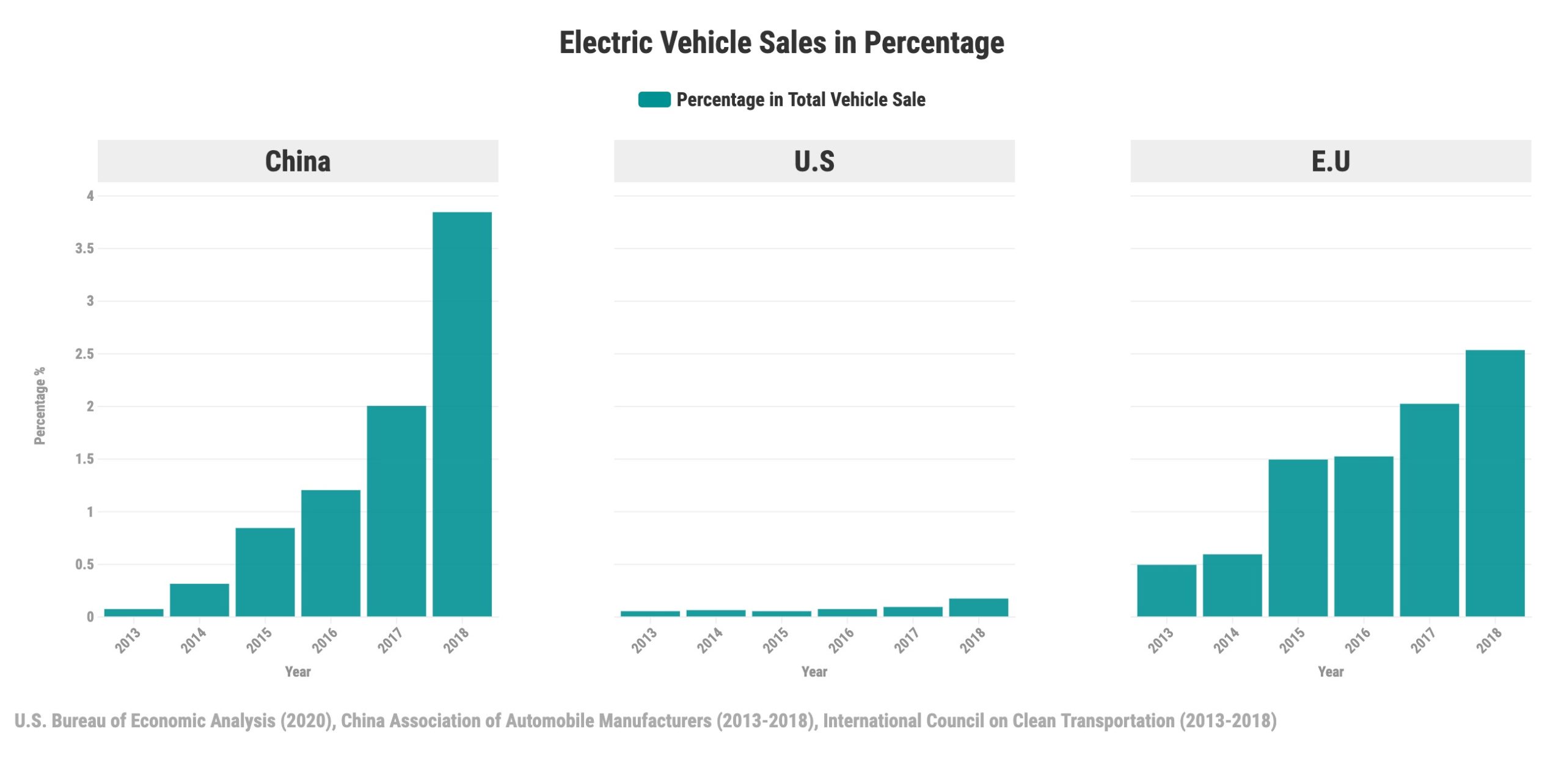Following its plans to shift forward the internal combustion-engine vehicles ban to 2035, the British government’s allocation of an additional £1.3bn to stimulate the uptake of electric vehicles (EVs) has been lauded as a concrete step forward for sustainability efforts. Singapore is also powering forward with plans to make electric vehicles cheaper and more accessible. While necessary in moving towards a low-carbon future, this has also attracted criticism over its protracted timeline, while sparking debate on the purported benefits of electrifying transport. Moreover, EV adoption continues to be inhibited by concerns over affordability and practicalities of charging, which are especially pronounced in many developing countries.
—
Being the world’s first major economy to legislate a net-zero emissions target by 2050, the UK has adopted recommendations by the Committee on Climate Change to hasten the electrification of its vehicle fleet. Despite sales volumes of battery EVs having tripled from January 2019 to January 2020- from 1 334 to 4 054 vehicles, amidst an overall 7% decline in the domestic automotive industry– battery electric vehicles still have an overall UK market share of less than 3%. Since plenty of work remains, increased funding for EV purchase subsidies and development of charging infrastructure will go a long way in improving EV affordability while alleviating concerns of the battery going flat while driving- commonly referred to as ‘range anxiety’.
Meanwhile, hybrid sales climbed in the same period, with close to one in five cars sold in the UK either fully electric or using technology that includes both an engine and a battery.
The industry is facing conflict over the future of hybrid cars, as the government is planning a consultation with a view to banning them by 2035 alongside petrol and diesel vehicles; previous plans for a ban on petrol and diesel sales in 2040 allowed the sale of hybrid vehicles that can drive for a reasonable distance using only battery power.
Singapore plans to phase out petrol vehicles by 2040, paving the way for greater adoption of EVs. Incentives for drivers to switch to EVs have been announced, including extension of the Vehicular Emissions Scheme to light commercial vehicles, rebates for early adoption and the revision of road taxes for qualifying vehicles.
The global EV market will reach a tipping point by 2022 when the cost of owning an EV will be on par with internal combustion engine vehicles, but there will be a supply gap of almost 14 million EVs in 2030, marring Singapore’s efforts.
The Republic has set the goal of creating 28 000 charging points, a significant addition to the current 1 600.
You might also like: The Growth of Renewable Energy: What Does the Future Hold?

Amidst the optimism surrounding cleaner transport, it is worth noting that environmental benefits from vehicle electrification are not reaped equally by all countries. While averting air pollution in urban centres, EVs are ultimately powered by electricity, which renders them only as clean as their energy source. Logically, countries which are heavily dependent on fossil fuels have comparatively little incentive to prioritise EV uptake, since investing in alternative energy generation yields more immediate returns in reducing environmental footprint.
This notion renders EV uptake in the UK feasible; the proportion of its power generation mix made up by fossil fuels fell to a record low in December 2019, after renewable energy became the UK’s largest source of electricity, with wind and solar energy accounting for nearly 39% of its electricity in the quarter of 2019. Coal-fired power stations contributed 1% of the UK’s electricity in the same period. After two coal plants- Aberthaw B and Fiddler’s Ferry- close in March, the UK will have four coal-fired power stations.
In regions (for example, much of ASEAN) where the automotive industry features prominently as an economic sector, it is challenging even for established EV manufacturers like Tesla to successfully enter the market, due to lack of brand recognition and reliable procurement chains.

Without aggressive policy action by these countries to increase accessibility of electric vehicles to the general populace, it is inconceivable that smaller companies can attain the scale of production necessary to stimulate domestic original equipment manufacturers (OEMs) into rethinking their product lines. Specialising in electrification of two-wheeled vehicles could be a more effective way of catalysing regional-scale disruption. By focusing on transition towards public transport, these governments which currently appear as laggards in the EV race could end up as global leaders in sustainable transport in the decades to come.

















